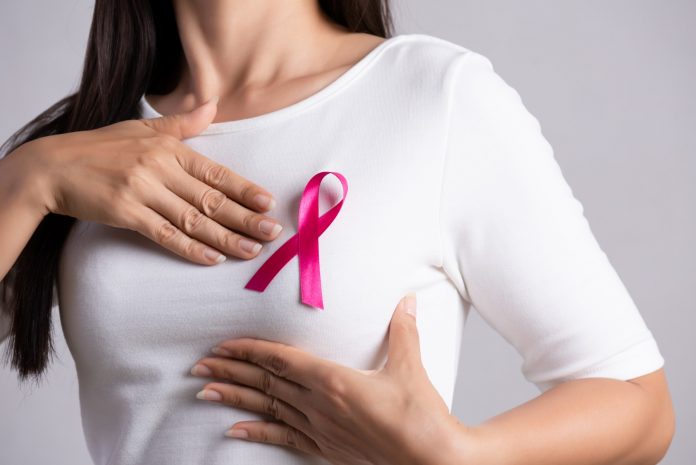Cancer occurs when genetic mutations in abnormal cells cause them to divide rapidly. You can inherit mutations or develop them due to environmental factors.
What is cancer?
Cancer is a large group of diseases that occur when abnormal cells divide rapidly and can spread to other tissue and organs.
These rapidly growing cells may cause tumors. They may also disrupt the body’s regular function.
Cancer is one of the leading causes of death in the world. According to the World Health Organization (WHO)Trusted Source, cancer accounted for almost 1 in 6 deaths in 2020. Experts are working hard to test out new cancer treatments every day.
What causes cancer?
The main cause of cancer is mutations, or changes to the DNA in your cells. Genetic mutations can be inherited. They can also occur after birth as a result of environmental forces.
These external causes, called carcinogens, can include:
physical carcinogens like radiation and ultraviolet (UV) light
chemical carcinogens like cigarette smoke, asbestos, alcohol, air pollution, and contaminated food and drinking water
biological carcinogens like viruses, bacteria, and parasites
According to the WHO, about 33 percent of cancer deaths may be caused by tobacco, alcohol, high body mass index (BMI), low fruit and vegetable consumption, and not getting enough physical activity.
Risk factors
Certain risk factors may increase your chance of developing cancer. These risk factors can include:
unprotected exposure to UV light, such as sunlight
infection by certain viruses including H. pylori, human papillomavirus (HPV), hepatitis B, hepatitis C, HIV, and the Epstein-Barr virus, which causes infectious mononucleosis
The risk of developing cancer also increases with age. In general, the risk of developing cancer appears to increase until the age of 70 to 80Trusted Source and then diminish, according to the National Cancer Institute (NCI).
Risk factors
Certain risk factors may increase your chance of developing cancer. These risk factors can include:
tobacco use
high alcohol consumption
an unhealthy diet, characterized by red and processed meat, sugary drinks and salty snacks, starchy foods, and refined carbohydrates including sugars and processed grains, according to a 2017 review
a lack of physical activity
exposure to air pollution
exposure to radiation
unprotected exposure to UV light, such as sunlight
infection by certain viruses including H. pylori, human papillomavirus (HPV), hepatitis B, hepatitis C, HIV, and the Epstein-Barr virus, which causes infectious mononucleosis
The risk of developing cancer also increases with age. In general, the risk of developing cancer appears to increase until the age of 70 to 80Trusted Source and then diminish, according to the National Cancer Institute (NCI).
Types of cancer
Cancers are named for the area in which they begin and the type of cell they are made of, even if they spread to other parts of the body. For example, a cancer that begins in the lungs and spreads to the liver is still called lung cancer.
There are also several clinical terms used for certain general types of cancer:
Carcinoma is a cancer that starts in the skin or the tissues that line other organs.
Sarcoma is a cancer of connective tissues such as bones, muscles, cartilage, and blood vessels.
Leukemia is a cancer of the bone marrow, which creates blood cells.
Lymphoma and myeloma are cancers of the immune system.
Learn more about specific types of cancer with the resources below.
appendix cancer
bladder cancer
bone cancer
brain cancer
breast cancer
cervical cancer
colon or colorectal cancer
duodenal cancer
ear cancer
endometrial cancer
esophageal cancer
heart cancer
gallbladder cancer
kidney or renal cancer
laryngeal cancer
leukemia
lip cancer
liver cancer
lung cancer
lymphoma
mesothelioma
myeloma
oral cancers
The importance of early detection
Early detection is when cancer is found in its early stages. This can increase the effectiveness of treatment and lower the mortality rate.
Cancer screenings may help detect signs of cancer early. Some common cancer screenings may detect:
Cervical cancer and prostate cancer. Some screenings, such as for cervical cancer and prostate cancer, may be done as part of routine exams.
Lung cancer. Screenings for lung cancer may be performed regularly for those who have certain risk factors.
Skin cancer. Skin cancer screenings may be performed by a dermatologist if you have skin concerns or are at risk of skin cancer.
Colorectal cancer. The American Cancer Society (ACS)Trusted Source recommends regular screenings for colorectal cancer beginning at age 45. These screenings are typically performed during a colonoscopy. At-home testing kits may also be able to detect some forms of colorectal cancer, according to a 2017 review .
Breast cancer. Mammograms to test for breast cancer are recommended for women ages 45 and olde, but you may choose to begin screenings at age 40. In people at a high risk, screenings may be recommended earlier.
If you have a family history of cancer or have a high risk of developing cancer, it is important to follow a doctor’s screening recommendations.
While recognizing cancer warning signs may help people with cancer seek diagnosis and treatment, some cancers may be harder to detect early and may not show symptoms until the later stages.
Signs and symptoms of cancer can include:
lumps or growths on the body
unexplained weight loss
fever
tiredness and fatigue
pain
night sweats
changes in digestion
changes in skin
cough
Specific types of cancers often have their own warning signs. If you are experiencing unexplainable symptoms, it is best to contact a doctor for a diagnosis.
How does cancer grow and spread?
Abnormal cell division
Normal cells in your body grow and divide. Each one has a life cycle determined by the type of cell. As cells become damaged or die off, new cells take their place.
Cancer disrupts this process and causes cells to grow abnormally. It’s caused by changes or mutations in the cell’s DNA.
The DNA in each cell has instructions that tell the cell what to do and how to grow and divide. Mutations occur frequently in DNA, but usually cells correct these mistakes. When a mistake is not corrected, a cell can become cancerous.
Mutations can cause cells that should be replaced to survive instead of die, and new cells to form when they’re not needed. These extra cells can divide uncontrollably, causing tumors to form.
Creation of tumors
Tumors can cause health problems, depending on where they grow in the body.
Not all tumors are cancerous. Benign tumors are noncancerous and do not spread to nearby tissues.
But sometimes, tumors can grow large and cause problems when they press against neighboring organs and tissue. Malignant tumors are cancerous and can invade other parts of the body.
Metastasis
Some cancer cells can also spread through the bloodstream or lymphatic system to distant areas of the body. This is called metastasis.
Cancers that have metastasized are considered more advanced than those that have not. Metastatic cancers are often harder to treat and more fatal.
Treatment
Cancer treatment can include different options, depending on the type of cancer and how advanced it is.
Localized treatment. Localized treatment usually involves using treatments like surgery or local radiation therapy at a specific area of the body or tumor.
Systemic treatment. Systemic drug treatments, such as chemotherapy, targeted therapy, and immunotherapy, can affect the entire body.
Palliative treatment. Palliative care involves relieving health symptoms associated with cancer, such as trouble breathing and pain.
Different cancer treatments are often used together to remove or destroy as many cancerous cells as possible.
The most common types of treatment are:
Treatment
Cancer treatment can include different options, depending on the type of cancer and how advanced it is.
Localized treatment. Localized treatment usually involves using treatments like surgery or local radiation therapy at a specific area of the body or tumor.
Systemic treatment. Systemic drug treatments, such as chemotherapy, targeted therapy, and immunotherapy, can affect the entire body.
Palliative treatment. Palliative care involves relieving health symptoms associated with cancer, such as trouble breathing and pain.
Different cancer treatments are often used together to remove or destroy as many cancerous cells as possible.
The most common types of treatment are:
Surgery
Surgery removes as much of the cancer as possible. Surgery is often used in combination with some other therapy in order to make sure all of the cancer cells are gone.
Chemotherapy
Chemotherapy is a form of aggressive cancer treatment that uses medications that are toxic to cells to kill rapidly dividing cancer cells. It may be used to shrink the size of a tumor or the number of cells in your body and lower the likelihood of the cancer spreading.
Radiation therapy
Radiation therapy uses powerful, focused beams of radiation to kill cancer cells. Radiation therapy done inside of your body is called brachytherapy, while radiation therapy done outside of your body is called external beam radiation.
Stem cell (bone marrow) transplant
This treatment repairs diseased bone marrow with healthy stem cells. Stem cells are undifferentiated cells that can have a variety of functions. These transplants allow doctors to use higher doses of chemotherapy to treat the cancer. A stem cell transplant is commonly used to treat leukemia.
Immunotherapy (biological therapy)
Immunotherapy uses your body’s own immune system to attack cancer cells. These therapies help your antibodies recognize the cancer, so they can use your body’s natural defenses to destroy cancer cells.
Hormone therapy
Hormone therapy removes or blocks hormones that fuel certain cancers to stop cancer cells from growing. This therapy is a common treatment for cancers that may use hormones to grow and spread, such as certain types of breast cancer and prostate cancer.
Targeted drug therapy
Targeted drug therapy uses drugs to interfere with certain molecules that help cancer cells grow and survive. Genetic testing may reveal if you are eligible for this type of therapy. It may depend on the type of cancer you have and the genetic mutations and molecular characteristics of your tumor.
Clinical trials
Clinical trials investigate new ways to treat cancer. This may include testing the effectiveness of drugs that have already been approved by the Food and Drug Administration (FDA) but for other purposes. It can also include trying new drugs. Clinical trials can offer another option for people who may have not seen the level of success they wanted with conventional treatments. In some cases, this treatment may be provided for free.
Alternative medicine
Alternative medicine may be used to complement another form of treatment. It may help decrease symptoms of cancer and side effects of cancer treatment, such as nausea, fatigue, and pain. Alternative medicine for cancer can include:
acupuncture
yoga
massage
meditation
relaxation techniques
After you get a cancer diagnosis, your outlook can depend on a number of factors. These factors can include:
type of cancer
stage of cancer at diagnosis
location of cancer
age
general health
Prevention
Knowing the factors that contribute to cancer can help you live a lifestyle that decreases your cancer risk.
Preventive measures to reduce your risk of developing cancer can include:
avoiding tobacco and secondhand smoke
limiting your intake of processed meats
eating a diet that focuses mainly on plant-based foods, lean proteins, and healthy fats, such as the Mediterranean diet
avoiding alcohol or drinking in moderation
maintaining a moderate body weight and BMI
doing regular moderate physical activity for 150 to 300 minutes per week
staying protected from the sun by avoiding direct sun exposure and wearing a broad spectrum sunscreen, hat, and sunglasses
avoiding tanning beds
getting vaccinated against viral infections that can lead to cancer, such as hepatitis B and HPV
Cancer is a group of serious diseases that are caused by genetic changes in your cells. Abnormal cancer cells may divide rapidly and form tumors.
Risk factors like smoking, drinking alcohol, a lack of physical activity, an unhealthy diet, having a high BMI, and catching certain viruses and bacteria may contribute to developing cancer.
Screenings may help detect cancer early when it is easier to treat. The treatment plan and outlook for people with cancer can depend on the type of cancer, the stage at which it is diagnosed, and their age and general health.





























